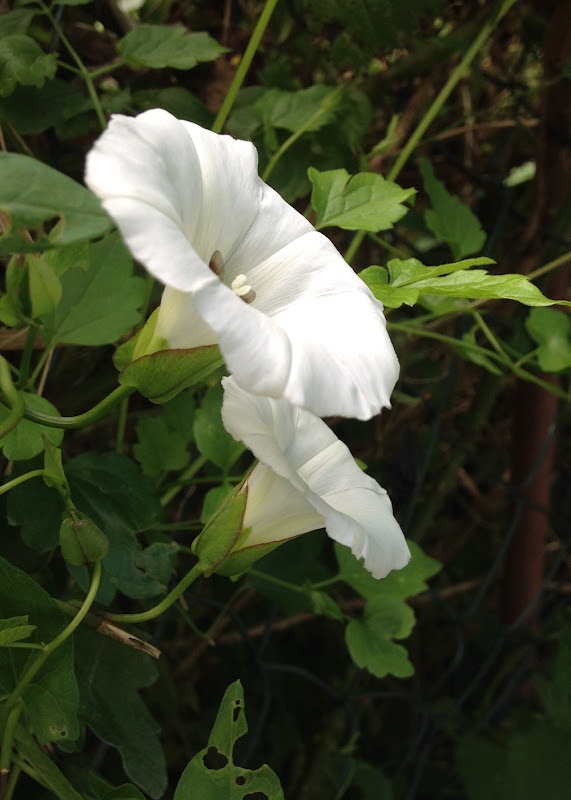The subject of the work is Bindweed, Calystegia septum, also known as Hedge Bindweed or Trumpet Vine, it is a member of the Convolulaceae family, which includes Morning Glory. A very common plant throughout Europe it is considered a nuisance by many gardeners due to is dominant climbing habit. However this feature appeals to me as it scrambles over other plants smothering them and creating a complex web of overlapping intertwined vines, this makes it quite a challenging subject.
In the video above you can see how I approach the leaves and background. The drawing is created using the continuous tone technique, which requires no obvious outline be shown. Thus the initial line drawing blends into the tonal work using continuous tone technique and different grades of pencil from 2H to 8B are used to create the tonal values. I start with the harder grades of mostly Faber Castell 9000 pencils, i.e. H grade pencil to lay a foundation on the leaves and gradually build up the layers and depth using increasingly softer grades, up to a 4B for leaves. You will also notice that I use a soft brush to constantly remove any debris, if you don't do this you may end up with dark flecks from small specks of graphite dust and from any erasing.
 |
| Laying the initial foundation for the back of a leaf using harder grades H - B in this case, working from light to dark |
 |
| I wanted to capture the depth of tangled stems and took many photographs for reference |
I'm working from photographs having started this piece in August 2014 but also made sketches and took many photographs as long ago as summer 2013 during a trip to Germany. I don't normally work from photographs but In this case I make an exception for two reasons: 1.I'm very familiar with this plant having painted it on numerous occasions 2. It's easier to complete black and white studies from photographs than it is to do colour work - simply because there are no colour matching issues which requires working from life rather than photographs.
 |
| Some saved dead stems are useful to observe the habit |
I gradually build up the image and have a rough drawing of the whole piece which is A1 in size ( on Arches satine 140lb). However along the way I add leaves and move a few things around. The beauty of such a dark drawing is that there is scope for change. I see this piece as very much experimental, if it works all well and good but if not at least i learned something from it.
This is where I'm up to with the work, obviously there is a long way to go and this represents about one third of the overall piece.
 | |
| This is the progress to date! yes it's a long term project with lots of layers of graphite. |
If you want to know more about drawing posts on this site - just use the 'search' facility on the right to type in 'drawing'.
This is my last post for 2015. I'll be back with a review of the year early next year.




















I love this piece! Looking forward to seeing the finished piece.
ReplyDeleteHappy New Year!
Thank you Dianne. That is going to be a stunning piece!
ReplyDeleteHappy New Year!
Lovely post Dianne!
ReplyDeleteGosh - what a complicated subject! No surprises, you portray it eloquently and beautifully.
ReplyDeleteBotanical art is one of the best art work of my life, i really love it, recently i have checked amazing botanical artist portfolio at http://goo.gl/Oi7gQI
ReplyDeleteSuch a great drawing, like this piece. thanks for share this.
ReplyDeleteThis comment has been removed by the author.
ReplyDelete